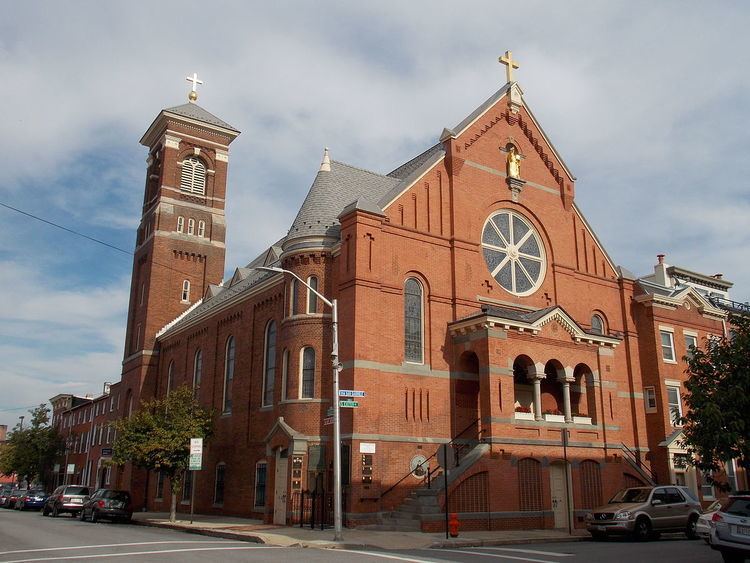 | ||
The history of the Italians in Baltimore dates back to the mid-19th century. The city's Italian-American community is centered in the neighborhood of Little Italy.
Contents
Demographics
In 1920, 7,930 foreign-born White people in Baltimore spoke the Italian language.
In 1940, 8,063 immigrants from Italy lived in Baltimore. These immigrants comprised 13.2% of the city's foreign-born white population. In total, 18,179 people of Italian birth or descent lived in the city, comprising 13% of the foreign-stock white population.
In the 1960 United States Census, Italian-Americans comprised 71% of the foreign-stock population in Little Italy, Baltimore's tract 3-2.
The Italian community in the Baltimore metropolitan area numbered 157,498 as of 2000, making up 6.2% of the area's population. In the same year Baltimore city's Italian population was 18,492, 2.8% of the city's population.
In 2013, an estimated 16,581 Italian-Americans resided in Baltimore city, 2.7% of the population.
In September 2014, immigrants from Italy were the thirty-sixth largest foreign-born population in Baltimore.
History
Italians began to settle in Baltimore during the late 1800s. Some Italians immigrants came to the Port of Baltimore by boat. The earliest Italian settlers in Baltimore were sailors from Genoa, the capital city of the Italian region of Liguria, who arrived during the 1840s and 1850s. Later immigrants came from Naples, Abruzzo, Cefalù, and Palermo. These immigrants created the monument to Christopher Columbus in Druid Hill Park. Many other Italians came by train after entering the country through New York City's Ellis Island. The Italian immigrants who arrived by train would enter the city through the President Street Station. Because of this, the Italians largely settled in a nearby neighborhood that is now known as Little Italy.
Little Italy comprises 6 blocks bounded by Pratt Street to the North, the Inner Harbor to the South, Eden Street to the East, and President Street to the West. Other neighborhoods where large numbers of Italians settled include Lexington, Belair-Edison, and Cross Street. Many settled along Lombard Street, which was named after the Italian town of Guardia Lombardi. The Italian community, overwhelmingly Roman Catholic, established a number of Italian-American parishes such as St. Leo's Church and Our Lady of Pompeii Church. The Our Lady of Pompeii Church holds the annual Highlandtown Wine Festival, which celebrates Italian-American culture and benefits the Highlandtown community association.
The August 2016 Central Italy earthquake affected Baltimore's Italian community, as many Baltimore Italian-Americans have friends or relatives living in Italy. Most Italians in Baltimore are of Southern or Central Italian descent, especially from Abruzzo, a region of Southern Italy close to the epicenter of the earthquake. St. Leo the Great Catholic Church in Little Italy held a vigil and sent prayers to the victims and survivors of the earthquake.
